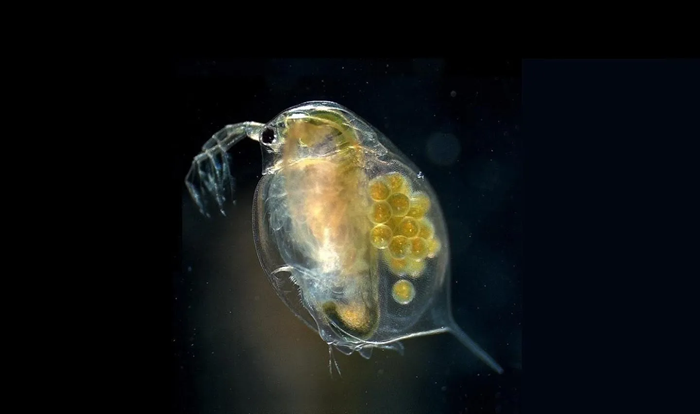Researchers from the University of Birmingham have explored the environmental impact of microplastics and per- and polyfluoroalkyl substances (PFAS), demonstrating that their combination can be highly detrimental to aquatic organisms. The study was published in the journal Environmental Pollution.

Image Credit: University of Birmingham
Microplastics are small plastic particles from clothing fibers, packaging, and plastic bottles. PFAS are a class of chemicals found in everyday products such as firefighting foams, various industrial products, non-stock cookware, and water-resistant clothing. These substances, called "forever chemicals," resist degradation and can accumulate in ecosystems, posing potential threats to wildlife and human health.
PFAS and microplastics can travel vast distances through water systems, even reaching the Arctic. They are frequently released simultaneously from consumer goods, but the combined impact of these pollutants and their interactions with other environmental contaminants is still poorly understood.
Scientists used Daphnia, also known as water fleas, to gain insight into the combined effects of these pollutants. These tiny organisms are commonly utilized in pollution monitoring because of their high sensitivity to chemicals, making them suitable for determining safe chemical thresholds in the environment.
Researchers examined two groups of Daphnia: one that had never encountered pollutants and another previously exposed to chemical contamination. This approach was made possible by Daphnia's ability to enter dormant states, allowing scientists to "resurrect" older populations with distinct pollution exposure histories.
Both groups of Daphnia were exposed throughout their whole lifecycle to a combination of irregularly shaped microplastics—mimicking natural conditions—and two PFAS chemicals at concentrations typically observed in lakes.
The researchers demonstrated that the combination of PFAS and microplastics led to more severe toxic effects than when each chemical was tested individually. The most concerning outcome was developmental issues, including delayed sexual maturity and stunted growth, along with increased rates of aborted eggs and fewer offspring. These adverse effects were particularly pronounced in Daphnia with a history of pollutant exposure, making them more vulnerable to these forever chemicals.
The study also revealed that the two chemicals together caused greater harm, with 59 % of the interactions being additive and 41 % synergistic. These interactions affected key fitness traits such as survival, reproduction, and growth.
Understanding the chronic, long-term effects of chemical mixtures is crucial, especially when considering that previous exposures to other chemicals and environmental threats may weaken organisms' ability to tolerate novel chemical pollution.
Luisa Orsini, Lead Researcher and Professor, School of Biosciences, University of Birmingham
Luisa Orsini adds, “Our research paves the way for future studies on how PFAS chemicals affect gene function, providing crucial insights into their long-term biological impacts. These findings will be relevant not only to aquatic species but also to humans, highlighting the urgent need for regulatory frameworks that address the unintended combinations of pollutants in the environment. Regulating chemical mixtures is a critical challenge for protecting our water systems.”
Current regulatory frameworks focus on testing the toxicity of individual chemicals, mostly using acute (short) exposure approaches. It is imperative that we investigate the combined impacts of pollutants on wildlife throughout their lifecycle to get better understanding of the risk posed by these pollutants under real-life conditions. This is crucial to drive conservation efforts and inform policy on facing the growing threat of emerging contaminants such as forever chemicals.
Dr. Mohamed Abdallah, Co-Leading Researcher, University of Birmingham
“Novel tools in chemical and biological screening with advances in artificial intelligence mean that we can understand the complex interactions among chemicals in the environment. Revising current methods for assessing environmental toxicity is therefore not only possible but imperative,” concluded Dr. Mohamed Abdallah.
Journal Reference:
Soltanighias, T., et al. (2024). Combined Toxicity of Perfluoroalkyl substances and Microplastics on the sentinel species Daphnia magna: Implications for Freshwater Ecosystems. Environmental Pollution. doi.org/10.1016/j.envpol.2024.125133.